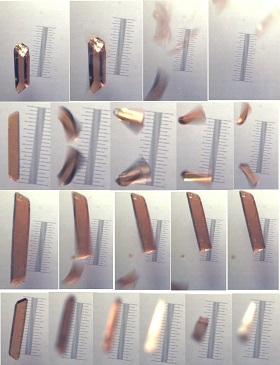Digital wellbeing should be a public health priority for the Arab region
21 October 2025
Published online 30 July 2013

Biological dispersal is the process by which organisms move from where they originate to the site of reproduction, such as the dispersal of seeds by insects and wind.
A team of researchers, led by Panče Naumov and including Elena Boldyreva from New York University Abu Dhabi, used crystals of the cobalt coordination compound [Co(NH3)5(NO2)]Cl(NO3) to mimic the visible motions of both the active and passive parts of plants and animals, publishing their findings in Angewandte Chemie1.
The researchers hooked up a high-speed camera to an optical microscope and exposed the crystals to ultraviolet light. When the crystals absorbed the light, minute structural changes inside the crystal led to a build up of strain energy. The sudden spontaneous release of this energy caused the crystals to leap distances up to hundreds of thousands of times their own size.
The jump could be used as a model for the development of self-actuating devices — devices that can move without external forces — inspired by mechanisms found in biological organisms. Such devices could potentially be used in several applications, including artificial muscles.
"While providing direct mechanistic insight into the limits of susceptibility of ordered matter to pressure, the mechanically responsive crystals described here also demonstrate a very fundamental concept — rapid and efficient conversion of light energy into mechanical work," says Naumov.
doi:10.1038/nmiddleeast.2013.117
Stay connected: